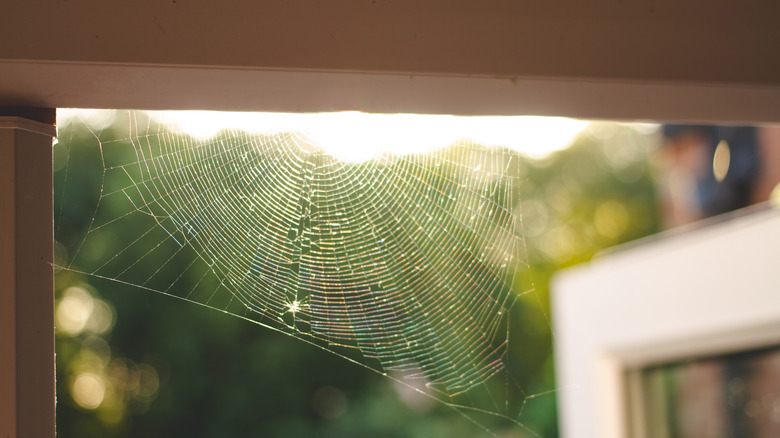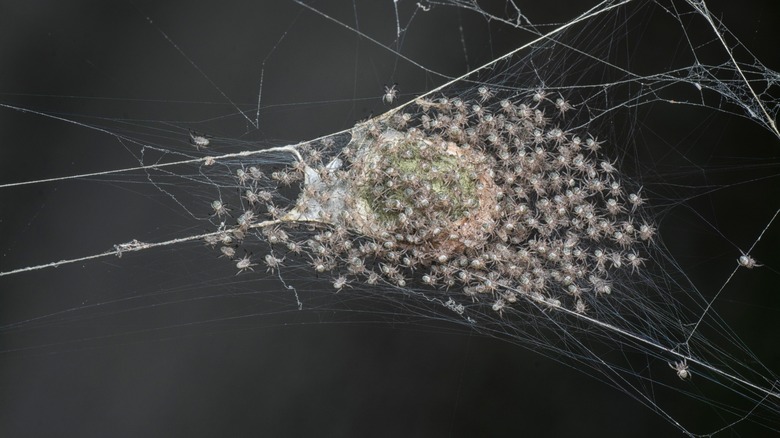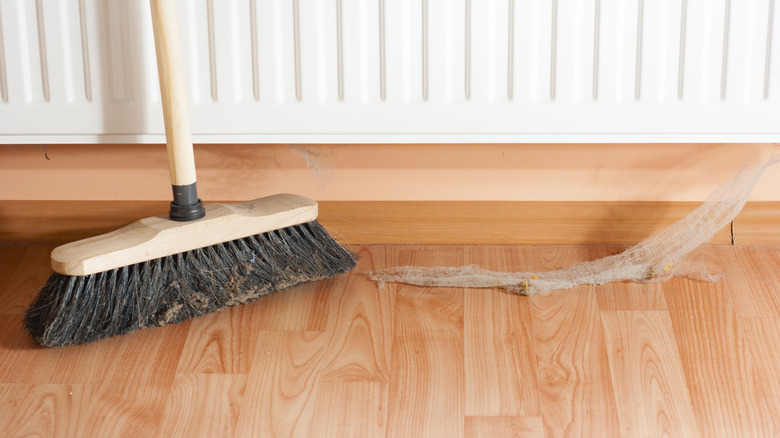You Might Be Overlooking These Signs That There's A Spider Nest In Your Home
Spotting the occasional spider in your house isn't exactly shocking — according to one study published in PeerJ, 100% of houses contain spiders, along with carpet beetles, flies, and ants. A spider nest, on the other hand, is a different matter. A house spider can have up to 4,000 babies in her year-long life span, so even a single nest can lead to an infestation. Signs that there's a spider nest in your home include extra webs, egg sacs, dead bugs, droppings, or mysterious bites.
Aside from building a nest, spiders can go their entire lives under the radar in your house. They tend to prefer hanging out in dark corners where they're unlikely to be noticed, they rarely bite people, and most species in the U.S. aren't dangerous to humans. Spiders also do some good. They eat other pests that are more of a nuisance, such as flies or ants, which makes a good case for not killing spiders in your home. But many people find spiders scary or creepy — even more so when there's the potential for countless babies. Here's how to spot a spider nest and what to do with it.
Where to look for spider nests
One or two spiders don't indicate a nest, but if you find yourself suddenly seeing more than that, a spider nest could be nearby. Similarly, you may notice an increase in webs or dead insects that spiders hunt. One other sign is mysterious bites. The symptoms of a bite vary by species, however, and it can be hard to determine the cause if you don't catch the culprit. You could also see spider droppings: small black dots that can look like paint splatters.
It's important to note that spiders don't build nests in the traditional sense, like birds. Their specific habits vary, but all spiders lay their eggs in egg sacs, which are protective silk balls that can each contain up to a thousand eggs. The egg sacs may be attached to a spider web or deposited on another object. They'll often be in an out-of-the-way spot, like underneath furniture or in cabinets, where they're more likely to survive; check rooms you don't go in often or corners you don't usually touch. Some spiders carry their egg sacs around with them.
What to do if you see a spider nest
If you spot a spider nest, removal is easy. Simply sweep or vacuum up the egg sacs and throw them into the outdoor trash. Continue cleaning up any egg sacs or spider webs that you spot on an ongoing basis.
It's also important to determine what type of spider you're dealing with — if you can't identify it, it's not a bad idea to call a professional for help. While most common household spiders are harmless, a few spider species in the U.S. have a painful, venomous bite that may require medical treatment, including brown recluse spiders and black widow spiders.
You can prevent future spider infestations by avoiding some of the common mistakes that attract spiders to your home. Keep your place clean and tidy — spiders love clutter because of the many hiding spots. Additionally, some spiders are drawn to moist environments, so a dehumidifier may help. And if you can cut down on other bugs by sealing away food, you'll eliminate the food sources that attract spiders.


